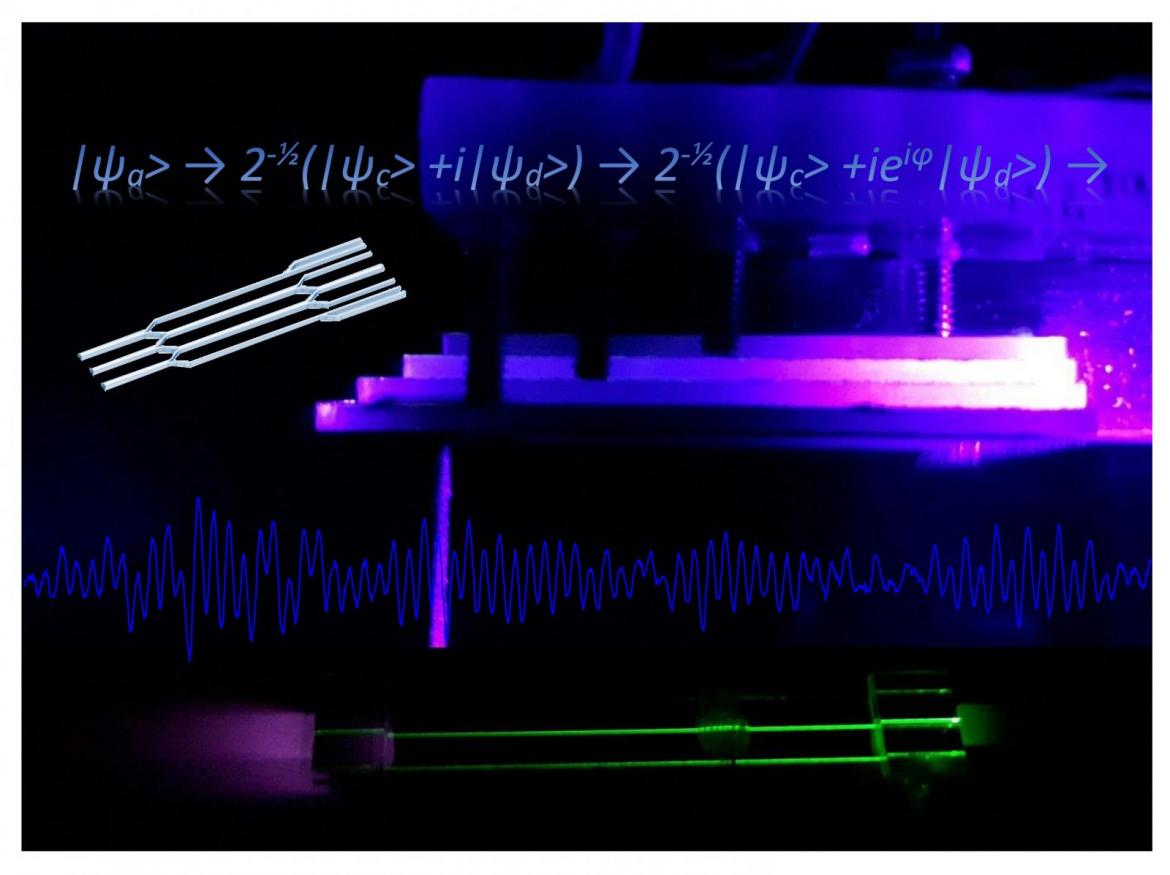
The research activity is organized on two main topics: (1) Quantum Cryptography Microsystem integrated on LiNbO3 and (2) Programmable Micro Diffracting Grating (PMDG) integrated on LiNbO3 for Optical Computing and Hyperspectral Imaging
The first one concerns the study of Interaction-Free measurements of entangled photons to verify the possibility to design a Quantum Cryptography MEOS device. The approach is innovative and a non-monolithic demonstrator is under test. The computing activity necessary to the design of the device has been performed and it will be fabricated on a LiNbO3 substrate using original planar processes developed at CNR-IMM/Laboratorio MIST E-R in the last ten years. (TRL 2). In the graphics, the picture of a non-linear optical waveguide, generated through Ion Implantation in Er:LiNbO3, is reported when 980nm pump photons are injected. Up conversion of the injected photons is evidenced by the bright green emission along the waveguide channel.
The second one is the follow-up of a project that had the maximum scientific score in a FP7 proposal. Unfortunately, the consortium that we could collect to present the proposal was considered not sufficiently well organized, therefore the project was not financed as being evaluated “Beyond the State of the Art” with respect to the supposed organizing and managing capabilities of the consortium.
Nowadays we implemented a new design of the PMDG performing computer simulations of the device and we fabricated a concept demonstrator of a programmable logic cell of calculus (stair like structure pictured in the graphics when a 405nm laser beam is analysed). The preliminary computer simulations and the preliminary experimental data gave very positive results and we are confident to succeed in fabricating a MEOS Working Prototype, (TRL4), in relatively short time.
The PMDG device under study has large flexibility because it can both represent the datum and elaborate it in the space of states represented in phases. Each PMDG channel supports a well-defined flux of data that can be both in parallel, (n-channels represent one byte), and in serial form, (each channel represents one bit whereas n sequential bits of the same channel, represent a word).
This choice is dependent on the kind of architecture developed and constitutes a flexibility element offered by PMDG technology.
Nowadays we are studying several architecture solutions to allow the capability to operate in combinational and/or sequential as a function of the chosen architecture.
Contact person: Gian Giuseppe Bentini


